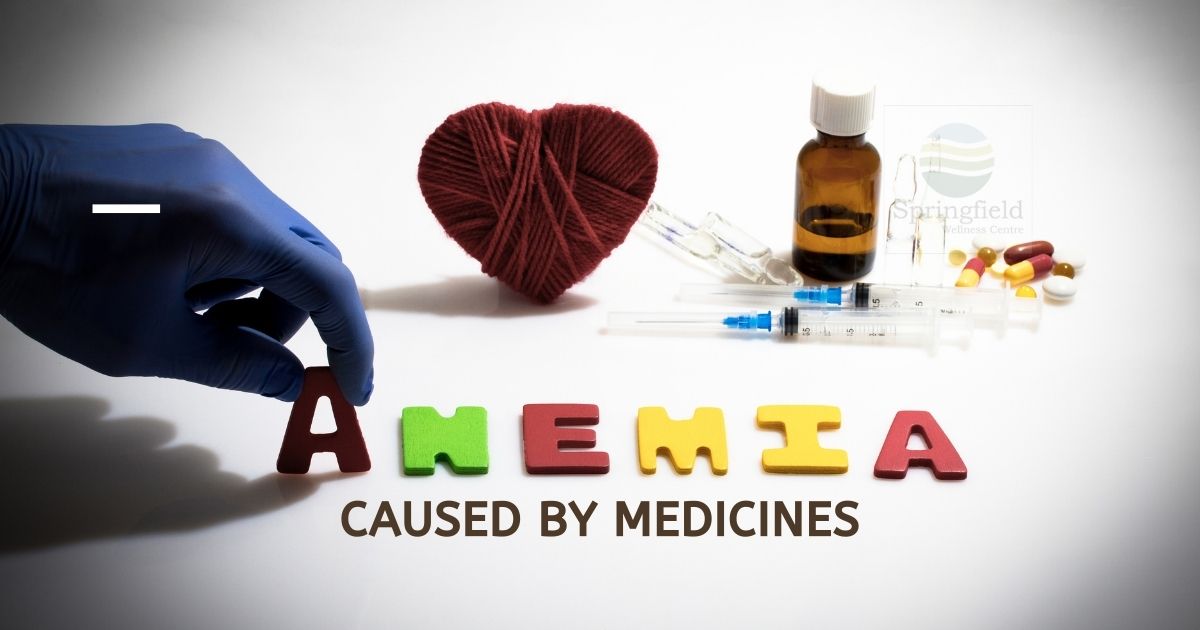Medicines causing Anemia
Certain medicines or drugs cause side effects. In a majority of cases, the side effects caused by any drug are minimal and are acceptable because without the drug the main disease for which they has been prescribed cannot be treated without them. One such side effect can be anemia.
What are the drugs that can cause Anemia?
- Some antibiotics like Cephalosporins, Penicillin, in particular, piperacillin, NSAID (pain killers) like Diclofenac, neuro medicines can cause Hemolytic The anemia caused by prolonged usage of NSAID is due to the ulcer and the associated bleeding.
- Usage of certain drugs like Acetazolamide, Gold salts, certain NSAIDs, Sulfanomides, Carbamazepine, etc., can cause Aplastic Anemia.
- Prolonged usage of certain drugs like Azathioprine, Sulfonamides, Mesalamine, Zidovudine, Phenytoin, Metformin, etc. can cause Megaloblastic Anemia.
- Prolonged diabetes medication can cause B12 deficiency anemia and that is why they are given Vitamin B12 supplements along with the regular diabetes medicines.
- Some medicines given as part of chemotherapy like Oxaliplatin sometimes can suppress the production of red blood cells. This may be rare but still, if it is observed, there are supplements available to keep a check.
Generally, if you are under any prolonged medications always make it a point to check your hemoglobin level.
What are the reasons for certain drugs causing anemia?
- Internal bleeding of the intestine and the subsequent loss of blood can result in anemia
- Dihydrofolate reductase is an enzyme that plays a supporting role in the building of DNA and other processes. Some drugs interfere with the activity of this enzyme and can result in causing megaloblastic anemia. Most commonly deficiencies of folic acid and vitamin B12 are said to cause
- Aplastic anemia occurs when bone marrow ceases to produce red bloos cells, white cells and platelets. Damage to certain stem cells is seen responsible for this type of anemia and this can result in reduced levels of circulating red blood cells, neutrophils and platelets.
- Premature destruction of red blood cells at a rate faster than new ones can be produced by the bone marrow is defined as hemolytic anemia. Certain drugs can cause a reduced Glutathione level. This substance binds on the RBC to safeguard against peroxides. Since Glutathione level becomes less, peroxides attack RBCs leading to hemolysis.
Signs and Symptoms drug-induced Anemia
The symptoms of any form of drug-induced anemia are almost similar to other forms of anemia. The doctors will look for common anemia symptoms like
- General fatigue, dizziness, and weakness
- Skin becoming pale (Pallor)
- Jaundice, yellowing of the skin
Along with the common anemia symptoms the type of anemia that has resulted due to the drugs can show specific symptoms that need to be looked into.
Symptoms of Hemolytic Anemia
– Dark (tea or cola-colored) urine, Elevated heart rate, sometimes having an enlarged spleen, medically termed Splenomegaly, malaise and shortness of breadth
Symptoms of Aplastic Anemia
– WBC Count is less than 3500 cells/cumm, Low Hb count, bleeding, high probabilities for infection
Symptoms of Megaloblastic Anemia
– Fatigue, malaise, muscle weakness, irregular heart beat and shortness of breadth
Diagnosis of drug-induced anemia
- Like a normal anemia, the diagnosis starts with getting a Complete Blood Count (CBC) report. Anemia is indicated by low hemoglobin. In hemolytic anemia, a rapid production of red blood cell takes place as a reaction to RBCs broken down faster. This process increases the number of reticulocytes (immature red blood cells) in the blood. This count is carefully observed in the CBC report.
- Another diagnostic method called Peripheral Blood Smear also comes in handy. Red blood cells normally look round or are donut-shaped under a microscope. When they are destroyed prematurely, it becomes fragmented or shaped like a sphere or globe, losing their typical donut shape. This is reported in this particular diagnostic method.

